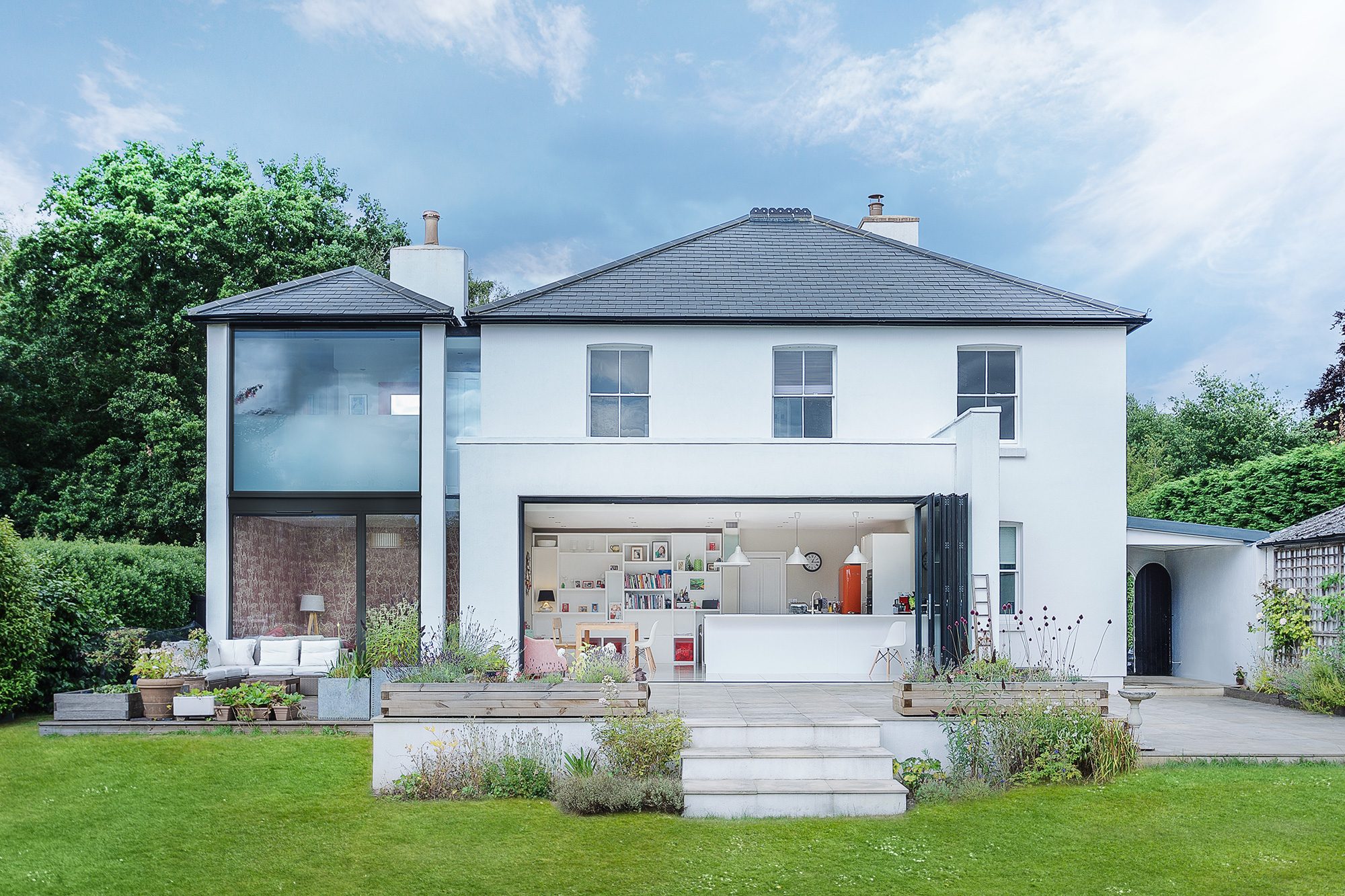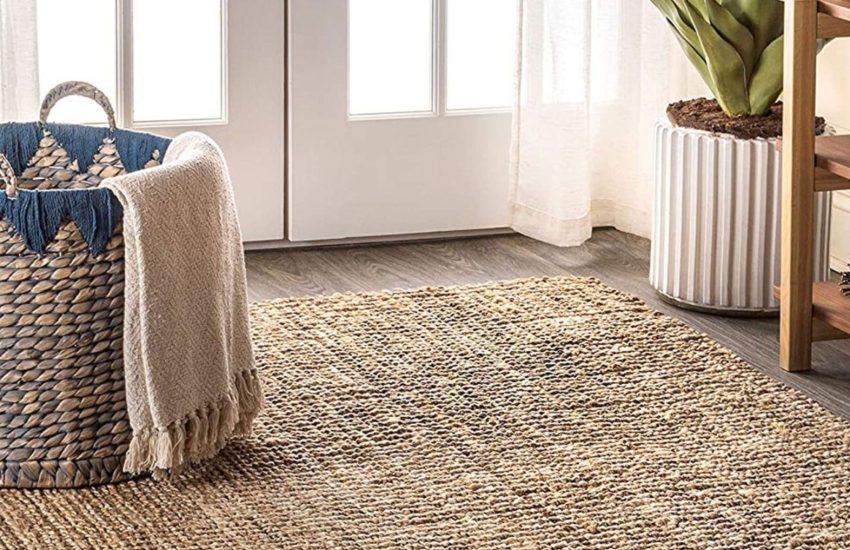Modern Extensions on Period UK Buildings.
Many people with period properties consider adding a modern extension to expand their property living space and facilities, especially kitchen and dining spaces, which open up to the garden. This often takes the form of extension/orangery type designs with features such as frameless glass or bifold doors, roof lights and roof lanterns. This is often complimented internally with a modern kitchen environment.
The juxtaposition of period and contemporary can be very successful architecturally and there are many examples. Architectural considerations include presenting the passage of time as opposed to recreating architectural themes & designs from the past.
Consider before you start:
For every successful example of this type of design that you see in publications like “House & Gardens” you can be certain that there has been a long and arduous path to getting the green light for the project from planning authorities. Below is a guide on how to proceed based on my experience both as someone who has completed the process and as someone involved in architectural design.
I will reference mainly Grade 2 listed building applications in this article as this is the most common Type (Grade 1 is exceptionally difficult if not being done on a commercial basis and grade 3 is far easier)
Find the right architect:
It is essential that you source the right architect for this type of project. You should look for one locally that:
- Has Conservation experience.
- Has successfully worked on similar projects locally.
- Has had dialogue with and possibly knows the planning officers and the British heritage officers.
Though it may appear the cheaper option do not fall into the trap of using a building company or supplier that can offer the complete design and build package as they will likely not have the conservation knowledge to obtain approval.
Planning Department & British heritage.
It is likely that the planning application will go smoothly but it really the conservation officer that will call the shots, as once identified as a listed building the project will be deferred to them. They will demand far more architectural sensitivity than on a modern build.
A common issue is scale, you may determine that you can have a large extension due to the square footage of your property (which is usually considerable with period buildings) and using the standard planning regulations come up with a large square footage footprint. You then find the conservation officer rejects this as the scale is detrimental to the character of the building. Even if the extension is not visible to anyone but yourselves there may still be issues as the officer is there to protect the building from architectural abuse.
Conservation departments and officers vary greatly in their approach zeal around the country and it is somewhat pot luck as to who and what stipulations you get. There is no absolute national or regional framework for guidelines on the restrictions they can impose. This is down to their understanding of regional character and their forward thinking.
You may see beautiful examples of you dream modern extension on a Victorian or Georgian house in London, complete with plaudits, only to be flatly refused the same design if you live in Dorset or Devon. Your bifold doors or frameless glass doors from a standard supplier can quickly become expensive timber framed bespoke doors with period proportions, so there can be massive cost implications for your project.
Advice on How to Proceed.
In my experience the best way ahead is to start a dialogue with the conservation officer right at the beginning of the project to discuss what you envision. Once you have an architect sketch up what you want out of the build, to show the scale and aspect of the design and have a meeting at the site with the officer, architect and yourself. This will be informal and may help you build up a rapport and understanding of what you want to achieve. There will be no formal decisions at this point as they will need to see a detailed planning application. You will however get a feel of how they will approach your application.
Approaching the Design.
There are two ways to go about this:
The architecturally sympathetic approach: your principal modern design with details that are sensitive to the period character. This may make the process smoother as the officer will see that you have researched and and taken on board what you understand they will be looking for. Again this depends on the officer and their expectations.
The full wish list: This is basically everything you want from a contemporary design complete with elements that are likely to be dismissed. The benefit of this approach is that there is always likely to be an element of “horse trading” with the officer and you can agree to revise elements of the design (that you may not even wanted) in return for approval of others. Conservation Officers have to show that they are of value and are doing their job so there will always back and forth dialogue.
The Architect: With this type of project your architect will be very helpful but will most likely want to take instruction from you on the main aspects. This is due to the fact that there maybe contention with planning, redraws and costs.
Dealing with Conservation Setbacks:
Once your application is in and you receive official observation notes from Conservation. It is often the case that they need more explanation. Sometimes even the architect will be at a loss as to the terms and meanings. Don’t be afraid to ask for elaboration and explanation, but let your architect be the middle man.
It is important that you don’t get into arguments and showdowns as they will dig their heels in, and they hold all the cards. Never go against conservation stipulations as unlike planning this a criminal offense and they have broad powers. Just be courteous, objective but firm in what you need from the project from your point of view, remember a lot of what they say is subjective and you need to counter with rational reasoning. It is often the case that this discussion is part of a resubmission of a revised design and here you can horse trade. For instance, if they did not like your proposal of a lantern roof light, the scale of the footprint
And the modern door design, you can compromise on 2 of the issues and say propose keeping your door specification but provide solid reasons for it. Here the wish list approach to design comes into play.
Negotiating
There are some solid buzzword topics that you can use when pushing your design which will make them take notice, as opposed to arguing aesthetics which is always subjective to some extent.
Sustainability: this is a good one as you can say argue the sustainability of say aluminum versus timber. Try to point your point of view forward but at the same time being sensitive to their observations, in this case for instance sympathetic finishes.
Eco/Energy efficiency: Again, a solid topic and if you can demonstrate how a modern approach with modern technologies can greatly impact this issue it is a great talking point.
Accessibility & Living Considerations: Though not as impactful as the above if you can show how the design will improve your aspect of living in the property (particularly if you are older) say for instance access to the garden and plans for easier mobility, this is a consideration.
Other Considerations:
Remember that the conservation officer is mainly there to protect the building and to some extent they will not see the building as belonging to you but rather part of Britain’s heritage. With this in mind if they see you have a budget for your project, but it is evident that other work need doing to the property to maintain its aspect and appeal they will recommend that the budget is put towards this before any consideration of new work is given.
Note: there are VAT exemptions for this type of work.
Conclusion:
Though tedious and labor intensive it is important to keep up communication and conversation with conservation. Though very attractive to house buyers, listed buildings come with their own range of problems for buyers wanting an architectural project or merely wanting to adapt how they live in the property. For this reason, they are not always at the top of estate agents easy to sell lists.
I hope this guide is helpful for anyone planning their next phase of listed building living.
Article by: https://nu-scene.com
Uk Bifold Door Specialists




